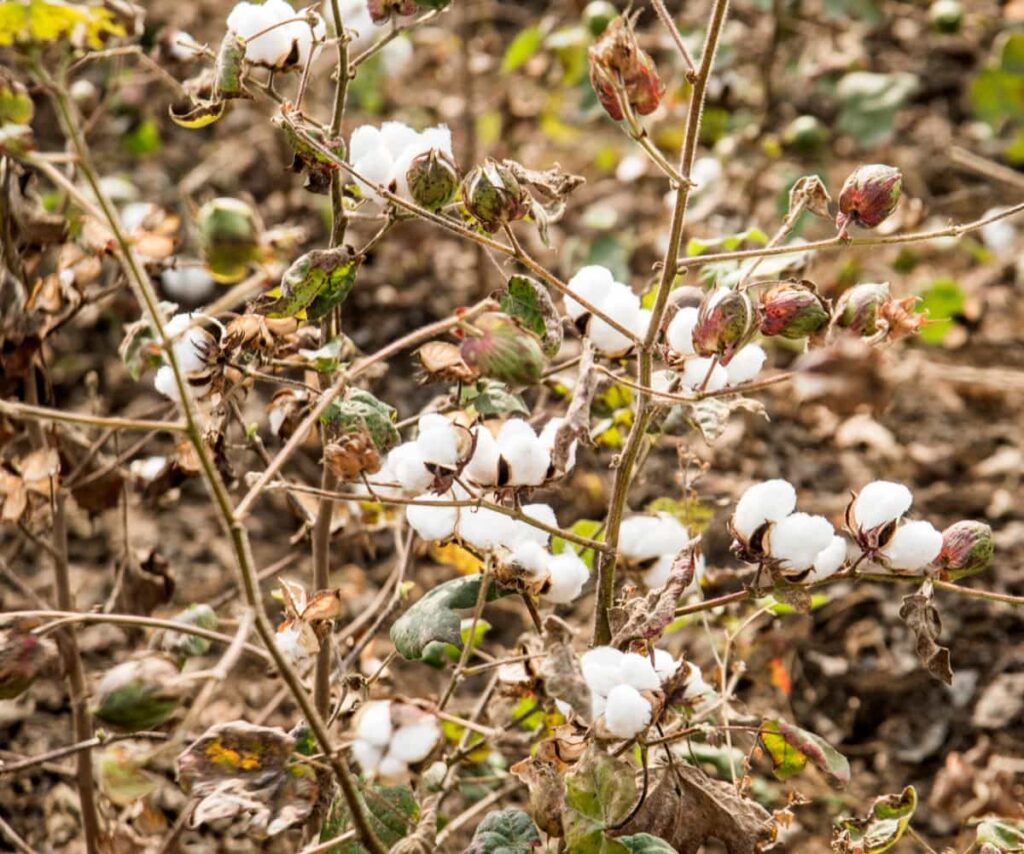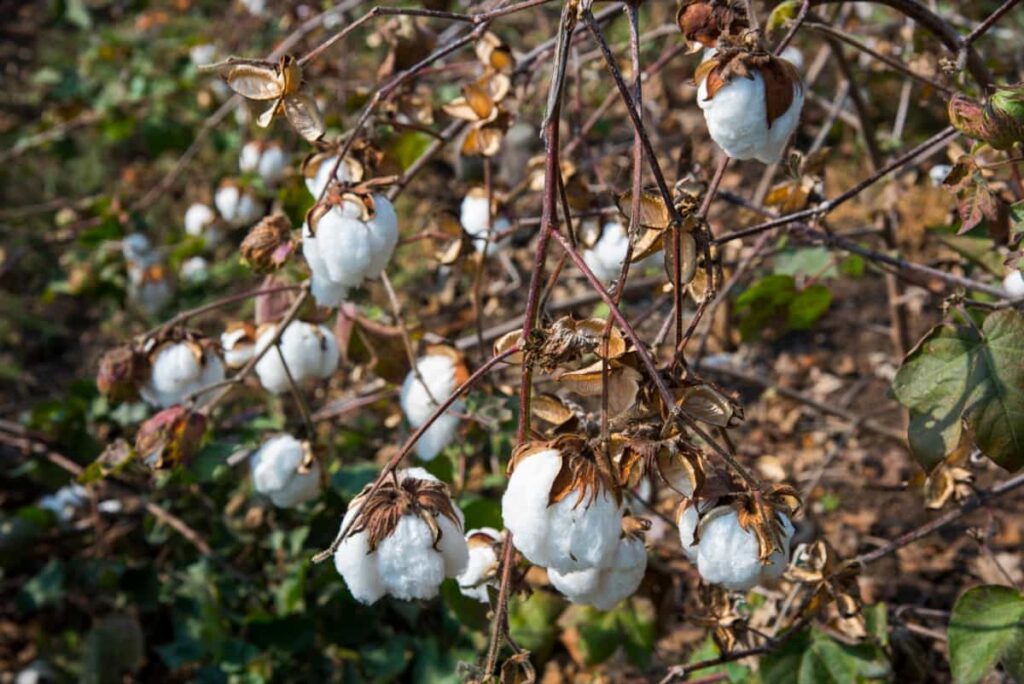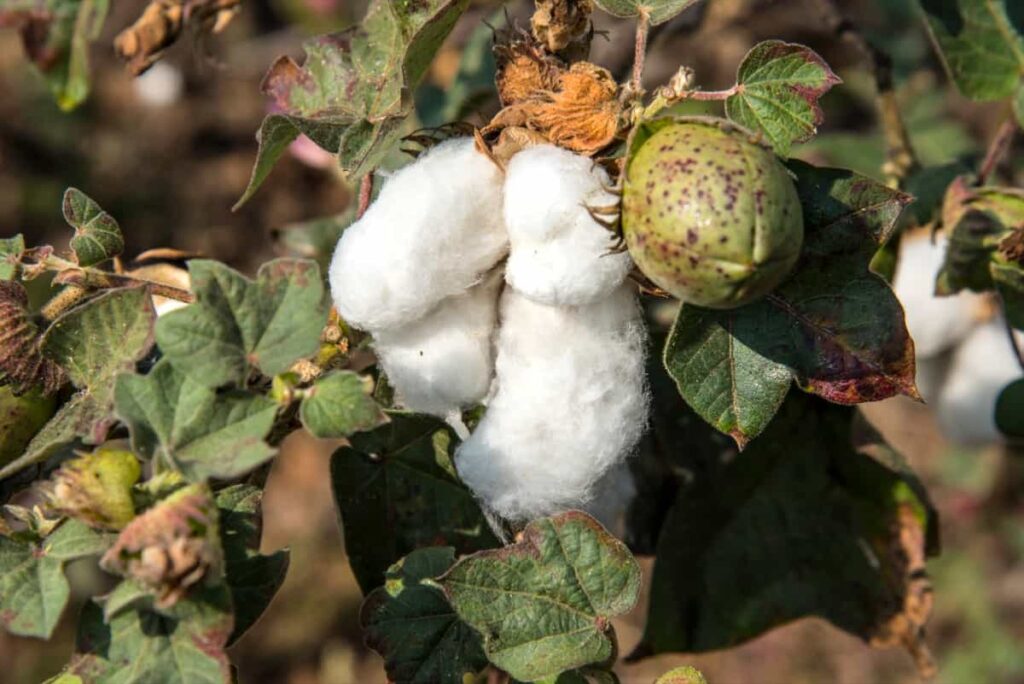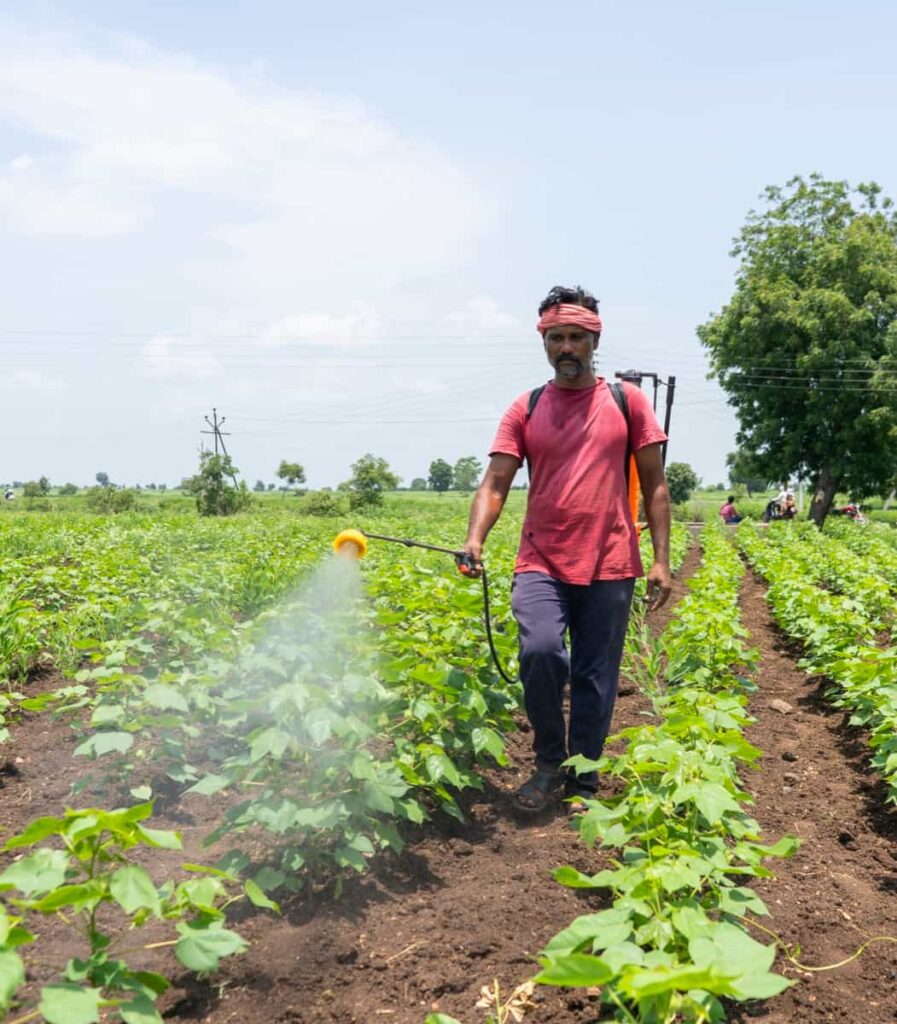The scientific name of Cotton is the Gossypium herbaceum. This versatile plant belongs to the Malvaceae family, which includes other beloved species like hibiscus and mallows. With the right strategies, you can protect your precious Cotton plants and ensure a bountiful harvest.

Identifying Common Cotton Pests
Cotton fields can be a haven for various pests that pose threats to your crop’s health. Identifying these common Cotton pests is crucial in ensuring a successful harvest. The most affected pest is the boll weevil, known for its voracious appetite and destructive nature. Another common culprit is the Cotton aphid, which sucks sap from plants, causing stunted growth.
Thrips are tiny insects that feed on young Cotton leaves and buds, affecting plant development. Being able to recognize these pests early on allows you to take measures to mitigate their impact on your crop’s yield.
Understanding the Life Cycle of Cotton Pests
Cotton pests have intricate life cycles that impact crop health. Understanding these cycles is crucial for effective pest management. Pests like boll weevils progress through distinct stages, from egg to larva, pupa, and adult. Each stage presents different challenges in controlling their population. By knowing when pests are most vulnerable during their life cycle, farmers can implement targeted interventions at the right time.
This knowledge helps disrupt breeding patterns and limit infestations. For instance, treating Cotton fields during the early stages of pest development can prevent widespread damage later on. Monitoring the progression of these cycles allows for timely action to protect the crop.
Implementing Integrated Pest Management (IPM) Strategies
Implementing integrated pest management (IPM) strategies is key to managing pests in your Cotton field. IPM promotes natural predators that can help keep pest numbers in check. By creating a balanced ecosystem within your Cotton field, you can reduce the need for chemical interventions. Crop rotation is another effective IPM strategy that disrupts pest life cycles and reduces their ability to establish large populations. Implementing cultural practices like proper irrigation and maintaining soil health also contribute to overall pest management efforts.
In case you missed it: Fertilizer Management in Cotton: Strategies for Maximizing Cotton Yield

Biological Control Methods for Cotton Pests
Biological methods offer a sustainable approach to managing pests in your Cotton fields. Introducing natural predators like ladybugs or lacewings can help keep pest populations in check without damaging the environment. These beneficial insects feed on harmful pests, helping maintain a balance in your crop ecosystem.
Another effective biological control method is releasing parasitic wasps that target specific Cotton pests. Additionally, using microbial insecticides derived from naturally occurring bacteria or fungi can provide targeted control over problematic pests while minimizing harm to beneficial organisms.
Chemical Control Options
Chemical pesticides are target specific pests that may be damaging crops. These products come in various forms, such as sprays, dusts, or granules, and should be applied according to manufacturer instructions. Different chemicals work on different types of insects or diseases, so identifying the problem accurately is key before applying any product.
Before using any chemical pesticide, read the label carefully and follow all safety precautions outlined by the manufacturer. After applying chemicals, regularly monitor your Cotton fields to assess their effectiveness and make adjustments if needed.
Monitoring Techniques for Early Pest Detection
Early detection of pests in your Cotton field is key to preventing widespread damage. One effective monitoring technique involves regularly inspecting your plants for any signs of pest activity. Look out for chewed leaves, stunted growth, or discolored patches on the foliage. Utilizing pheromone traps can help in capturing and identifying specific pests in the early stages of infestation. Another useful method is using sticky traps to catch flying insects like aphids or whiteflies.
These traps act as indicators of pest presence and can guide you in implementing targeted control measures. Additionally, employing scouting techniques such as visual inspections or using binoculars to check high spots can help spot pests that may not be easily visible from ground level. Regularly monitoring your Cotton field allows you to stay ahead of potential pest issues and maintain a healthy crop yield.
Cultural Practices to Reduce Pest Pressure
Cotton farmers can employ various cultural practices to minimize pest pressure in their fields. The effective method is crop rotation, which disrupts pests’ life cycles and naturally reduces their populations. Choosing resistant Cotton varieties can also help deter pests from infesting the crops. Maintaining proper plant spacing allows for better airflow, reducing humidity levels that may attract pests and diseases.
In case you missed it: Cotton Cultivation Cost Per Acre in India: Exploring State-wise Average Production Cost

Weeding regularly helps eliminate potential habitats for harmful insects, decreasing the likelihood of infestations. Additionally, practicing good sanitation by removing infected plants promptly prevents the spread of diseases. Implementing trap crops like sunflowers or marigolds can divert pests away from Cotton plants, protecting the main crop. Installing physical barriers can further shield Cotton plants from insect damage.
Preventing Disease Outbreaks in Cotton Plants
Keeping your Cotton plants healthy and disease-free is crucial for a successful harvest. To prevent disease outbreaks, start by selecting disease-resistant Cotton varieties suited to your region. Proper spacing between plants allows for better airflow, reducing humidity levels that can promote diseases. Regularly inspect your Cotton fields for disease signs like leaf spots, wilting, or discoloration.
Early recognition is important in preventing the spread of infections. Rotate crops to reduce the pathogens in the soil, and consider planting cover crops to improve soil health. Implement good irrigation practices to avoid overwatering, which can create favorable conditions for disease development. Remove any infected plant debris promptly to prevent pathogens from overwintering in the field and spreading in the next growing season.
Recognizing Symptoms of Common Cotton Diseases
When it comes to managing your Cotton field, it is important to recognize the symptoms of common diseases to maintain a healthy crop. Some of the most prevalent Cotton diseases include Fusarium wilt, Verticillium wilt, and bacterial blight. Fusarium wilt typically causes yellowing and wilting of lower leaves, while Verticillium wilt leads to vascular discoloration in plant stems.
Bacterial blight manifests as water-soaked lesions on leaves that eventually turn brown. Another common disease is Cotton Leaf Curl Virus (CLCuV), which results in stunted growth, curling of leaves, and reduced yield. Additionally, you may encounter Alternaria leaf spot characterized by circular lesions with dark centers on foliage.
Fungicides and Cultural Practices
Fungicides are chemical agents that help prevent the spread of fungal diseases, while cultural practices focus on creating an environment that discourages disease development. Choosing the right fungicide is crucial, as not all products are effective against every type of pathogen. Rotate different types of fungicides to prevent resistance from developing in pathogens over time.
In case you missed it: Disease Management in Cotton Farming: Strategies for Control and Prevention

Cultural practices like proper irrigation management, crop rotation, and maintaining good soil health can also play a significant role in reducing disease pressure in Cotton fields. Implementing pest and disease management strategies is essential to ensure a healthy Cotton yield. By identifying common pests early on, farmers can take measures to prevent infestations from spreading.
- Broccoli Varieties: Choosing the Right Cultivars for Your Farm
- How to Raise Pigs in Your Own Backyard: A Comprehensive Guide
- Budget Friendly Sheep Shed Ideas: Cheap and Low-Cost Tips
- How Much Do Cattle Farmers Make: Revenue Streams in Cattle Farming
- Management Pests and Diseases in Your Cotton Field
- Sheep Farming Business Plan for Beginners
- Aquaponic Farming at Home: A Step-By-Step Guide
- Profitable Village Farming Business Ideas in 2024
- High-Yield Aquaculture: Fast-Growing Fish for Farming
